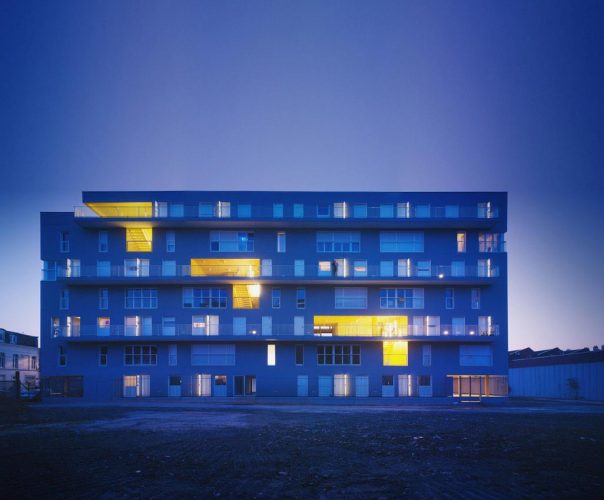One day, a project : Machu Picchu by Sophie Dehay architect
It is very rare for me to be sensitive to collective housing, especially since it is unfortunately unusual to see any innovation in the private or shared spaces proposed. However, several years ago now, a collective housing project caught my eye and fundamentally changed my way of seeing this type of housing.
This project is Machu Picchu + (funny name you will agree) in Lille, delivered in 2013 and designed by Sophie Delhay Architect. So already yes, it’s yellow. Some people know that I inevitably wanted to put yellow in many of my projects for two or three years, which is to say the impact. Not that I’m so fascinated by the canary, no-no, just see it as a willingness to contrast with the dull aspect that these buildings generally offer us.
In short, Machu Picchu is for me the idea of enhancing collective spaces, the inter-habitats which, accentuated by the generosity of the architect, allow for the deployment of shared uses between the inhabitants of the building. We find Corbuséan concepts (not that I am idolizing the machine of living) in this desire to create exchanges between living spaces turned towards themselves. Added to this, the architect mixes the course: from the top to the bottom and vice versa, offering frames on the historic city of Lille.
In terms of organization, we are on a crossing dwelling with an entrance from a corridor and then two wet blocks along the bearing walls that separate each dwelling. Efficient and above all…adaptable. The proposed volumes allow an evolution of uses within the housing while maintaining a logic of day/night separation on one side and the other of the housing. An elegant way of looking at housing, fluid, conducive to adapting to the variations of daily life.
Speaking of variations in daily life, I obviously can’t help but bounce back on current events and the global health crisis to which are added problems of social cohesion that escape us when we talk about housing. This project questions the interstices between private and public spaces. These yellow zones, buffer zones, unqualified zones that very often end up as rubbish dumps. What uses can be developed there ? Are they intermediate places allowing us to reconnect despite sanitary constraints ? Are these areas of activity being renewed ? The tracks remain open.
Would you like to be kept informed of new blog posts ?
Subscribe to our newsletter !
